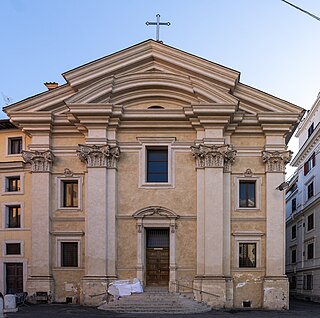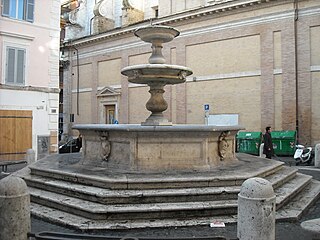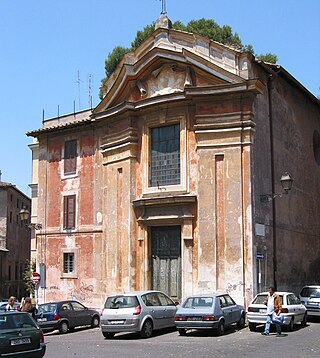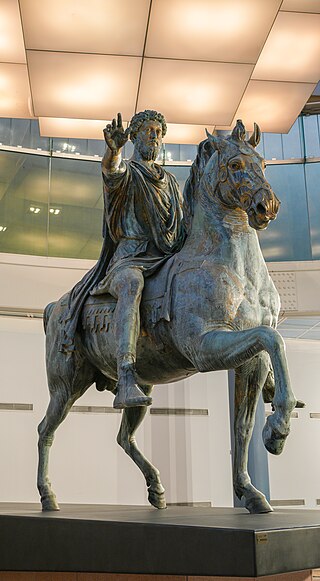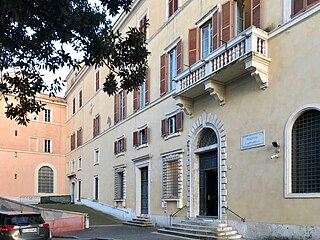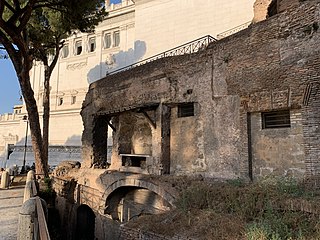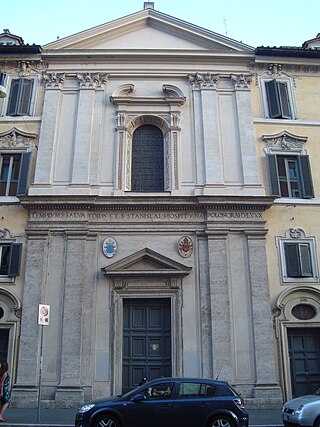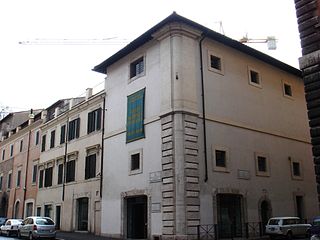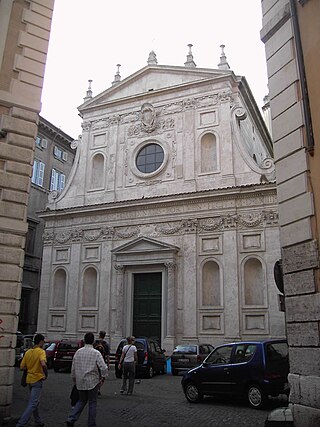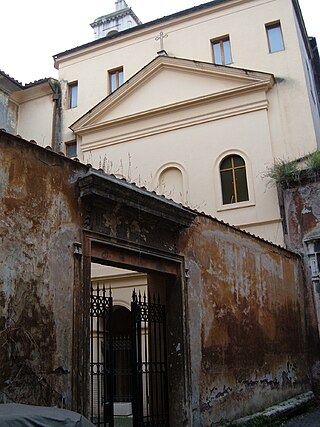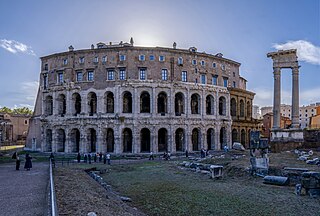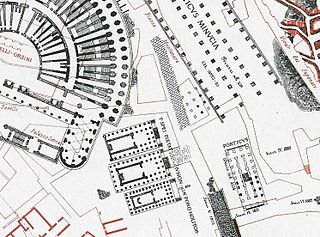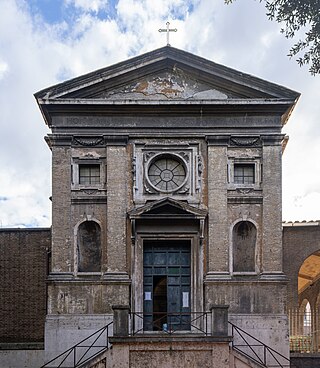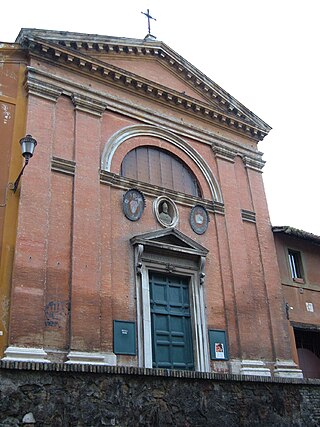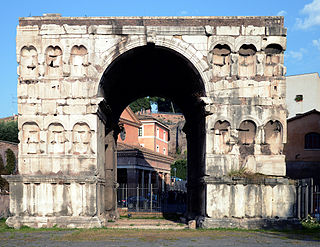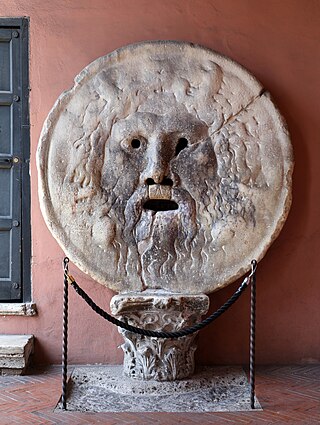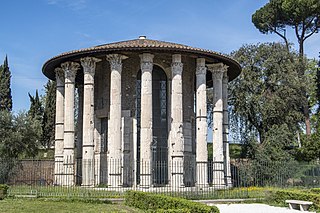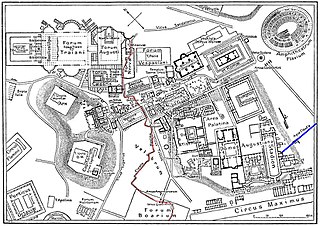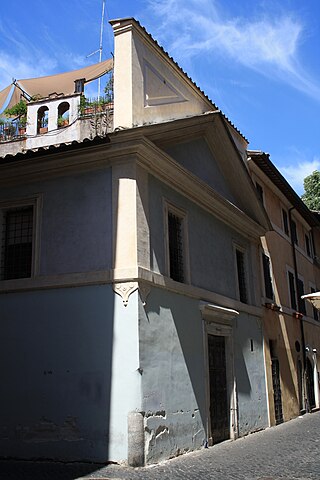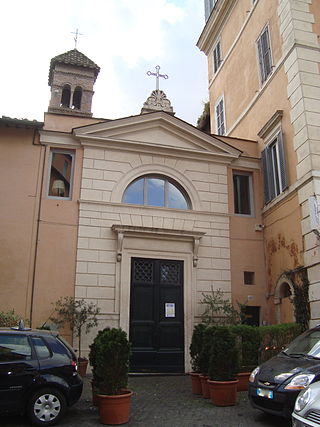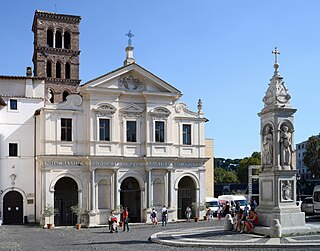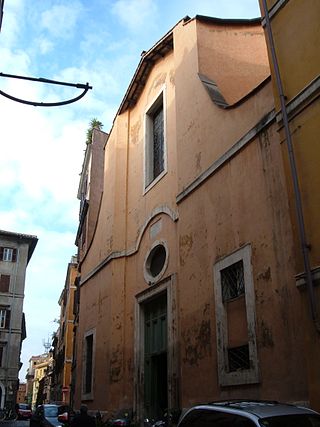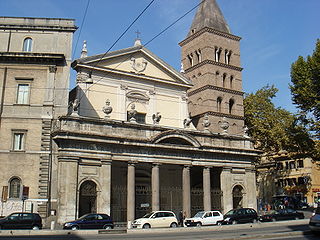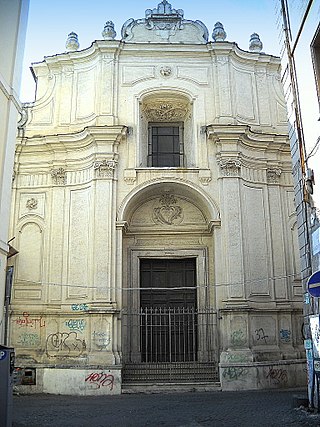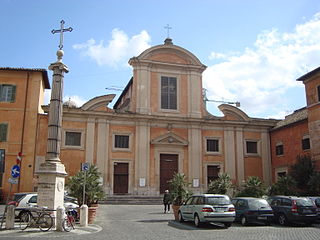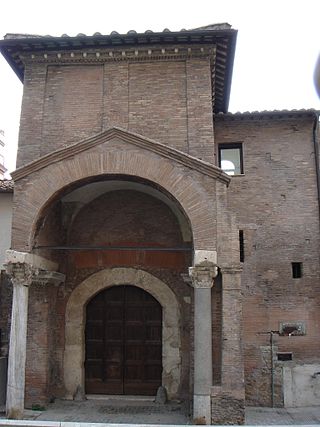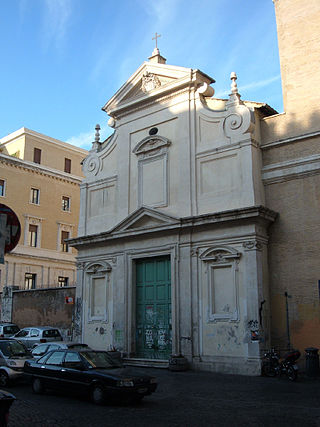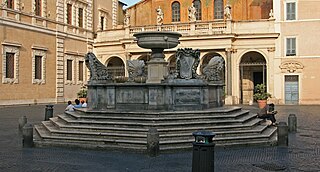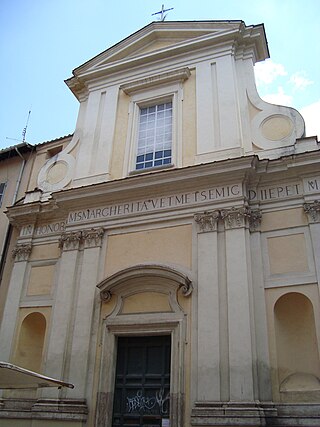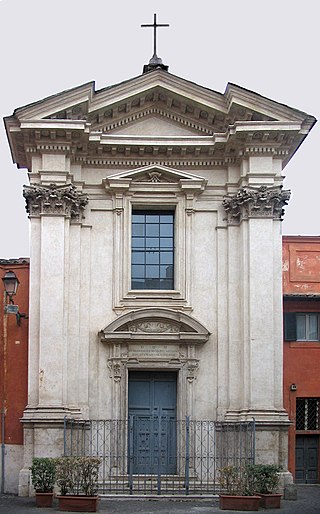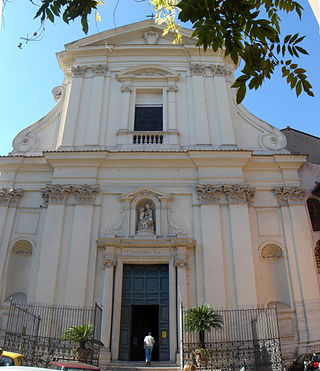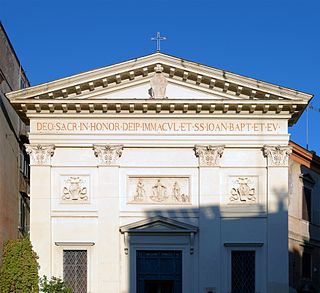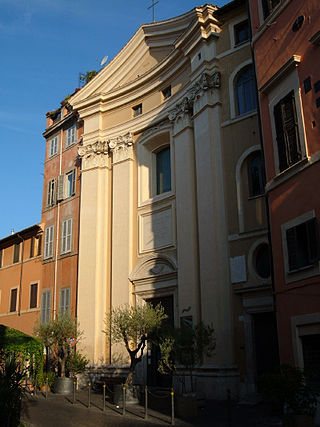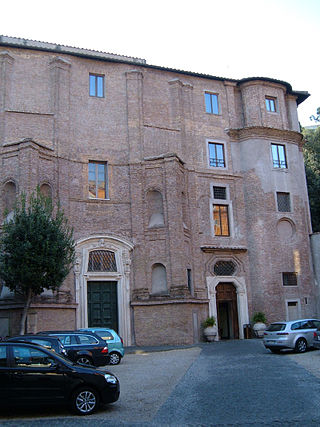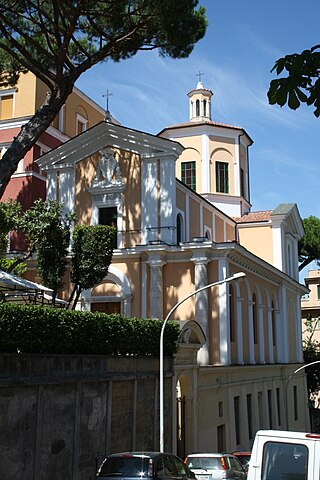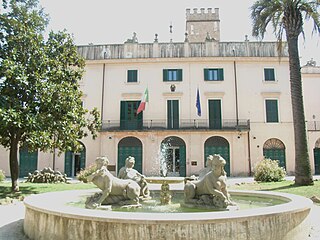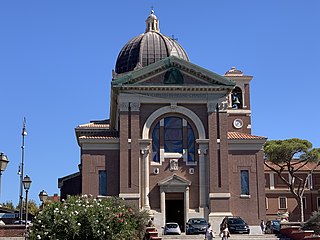Self-guided Sightseeing Tour #10 in Rome, Italy
Legend
Guided Free Walking Tours
Book free guided walking tours in Rome.
Guided Sightseeing Tours
Book guided sightseeing tours and activities in Rome.
Tour Facts
13 km
388 m
Experience Rome in Italy in a whole new way with our free self-guided sightseeing tour. This site not only offers you practical information and insider tips, but also a rich variety of activities and sights you shouldn't miss. Whether you love art and culture, want to explore historical sites or simply want to experience the vibrant atmosphere of a lively city - you'll find everything you need for your personal adventure here.
Activities in RomeIndividual Sights in RomeSight 1: Casa di Augusto
The House of Augustus, or the Domus Augusti, is situated on the Palatine Hill in Rome, Italy. This house has been identified as the primary place of residence for the emperor Augustus.
Sight 2: Aula Regia
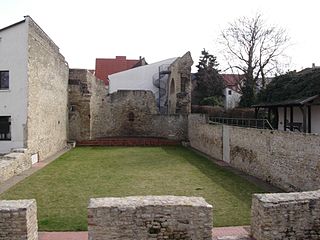
An aula regia, also referred to as a palas hall, is a name given to the great hall in an imperial or royal palace. In the Middle Ages the term was also used as a synonym for the Pfalz itself.
Sight 3: Chiesa di San Francesco di Paola ai Monti
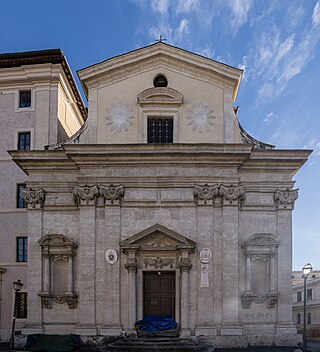
San Francesco da Paola ai Monti is an 18th-century titular church in Rome. It is dedicated to St Francis of Paola, the founder of the Order of Minims, whose friars serve this church and whose Generalate is attached to it, and is located in the Monti rione.
Sight 4: Moses (Michelangelo)
Moses is a sculpture by the Italian High Renaissance artist Michelangelo, housed in the church of San Pietro in Vincoli in Rome. Commissioned in 1505 by Pope Julius II for his tomb, it depicts the biblical figure Moses with horns on his head, based on a description in chapter 34 of Exodus in the Vulgate, the Latin translation of the Bible used at that time. Some scholars believe the use of horns may often hold an antisemitic implication, while others hold that it is simply a convention based on the translation error.
Sight 5: Chiesa dei Santi Gioacchino e Anna ai Monti
Santi Gioacchino ed Anna ai Monti is a church on the Via Monte Polacco in Rome.
Sight 6: Fontana della Madonna dei Monti
The Fountain of the Catechumens is a fountain built in 1589 by Battista Rusconi to a design by Giacomo Della Porta and located in Piazza della Madonna dei Monti in the Monti district, in Rome.
Sight 7: Santa Maria della neve al Colosseo
The church of Santa Maria della Neve is a church in Rome, in the Monti district, in Via del Colosseo, at the intersection with Via del Cardello.
Wikipedia: Chiesa di Santa Maria della Neve al Colosseo (IT)
Sight 8: Santa Maria del Buon Consiglio
Sight 9: Museo Internazionale del Presepio
The International Typological Museum of the Nativity Scene "Angelo Stefanucci" is a private museum of the city of Rome located in the basement of the church of Saints Quirico and Giulitta, open to the public with restricted hours, which collects dozens of nativity scenes from all over the world, built with different materials and techniques, as well as books, medals, posters, stamps always related to the nativity scenes.
Wikipedia: Museo tipologico internazionale del presepio Angelo Stefanucci (IT), Website
Sight 10: Arch of Septimius Severus
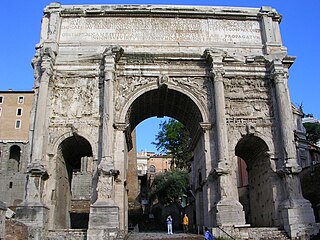
The Arch of Septimius Severus at the northwestern end of the Roman Forum is a white marble triumphal arch dedicated in 203 AD to commemorate the Parthian victories of Emperor Septimius Severus and his two sons, Caracalla and Geta, in the two campaigns against the Parthians of 194-195 and 197–199. After the death of Septimius Severus, his sons Caracalla and Geta were initially joint Emperors. Caracalla had Geta assassinated in Rome; in the practice now known as damnatio memoriae, Geta's memorials were destroyed and all images or mentions of him were removed from street buildings and monuments. Accordingly, Geta's image and inscriptions referring to him were removed from the arch.
Sight 11: Equestrian statue of Marcus Aurelius
The Equestrian Statue of Marcus Aurelius is an ancient Roman equestrian statue on the Capitoline Hill, Rome, Italy. It is made of bronze and stands 4.24 m tall. Although the emperor is mounted, the sculpture otherwise exhibits many similarities to the standing statues of Augustus. The original is on display in the Capitoline Museums, while the sculpture now standing in the open air at the Piazza del Campidoglio is a replica made in 1981 when the original was taken down for restoration.
Sight 12: Palazzo dei Conservatori
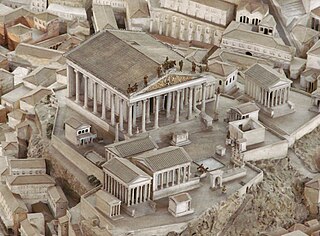
The Capitolium or Capitoline Hill, between the Forum and the Campus Martius, is one of the Seven Hills of Rome.
Sight 13: Palazzo Caffarelli
The Palazzo Caffarelli al Campidoglio stands on the southwest side of the Capitoline Hill, and now houses a wing of the Capitoline Museums, the cafeteria and a panoramic terrace.
Sight 14: Insula dell'Ara Coeli
The Insula dell'Ara Coeli is one of the few surviving examples of an insula, the kind of apartment blocks where many Roman city dwellers resided. It was built during the 2nd century AD, and rediscovered, under an old church, when Benito Mussolini initiated a plan for massive urban renewal of Rome's historic Capitoline Hill neighbourhood.
Sight 15: Chiesa di Santo Stanislao dei Polacchi
Santo Stanislao dei Polacchi, also known as San Stanislao alle Botteghe Oscure, is a Roman Catholic church in Rome, sited on Via delle Botteghe Oscure in the Sant'Angelo rione. It is the national church of Poland in Rome.
Sight 16: Crypta Balbi
The Crypta Balbi is a complex connected to the ancient theater of Balbo in Rome. Today it is one of the headquarters of the National Roman Museum.
Sight 17: Santa Caterina dei Funari
Santa Caterina dei Funari is a church in Rome in Italy, in the rione of Sant'Angelo. The church is mainly known for its façade and its interior with frescoes and paintings.
Sight 18: Sant’Ambrogio della Massima
Sant'Ambrogio della Massima is an ancient Catholic church in rione Sant'Angelo, Rome, Italy. It is home to the General Curia of the Subiaco Cassinese Congregation of the Order of Saint Benedict.
Sight 19: Sant’Angelo in Pescheria
Sant'Angelo in Pescheria or in Piscaria is a church in Rome. Dating from the 8th century, it is now used as the conventual church of the General Curia of the Clerics Regular Minor, the orders global headquarters. "In Pescheria" refers to its location close to the fish market built in the ruins of the ancient Porticus Octaviae.
Sight 20: Theatre of Marcellus
The Theatre of Marcellus was an ancient open-air theatre in Rome, Italy, built in the closing years of the Roman Republic. It is located in the modern rione of Sant'Angelo. In the sixteenth century, it was converted into a palazzo.
Sight 21: Foro Olitorio
The Forum Holitorium or Olitorium is an archaeological area of Rome, Italy, on the slopes of the Capitoline Hill. It was located outside the Carmental Gate in the Campus Martius, crowded between the cattle market and buildings located in the Circus Flaminius.
Sight 22: Chiesa di Sant’Omobono
Sant'Omobono is a church in Rome at the foot of the Capitoline Hill in rione Ripa.
Sight 23: Chiesa di San Giovanni Battista Decollato
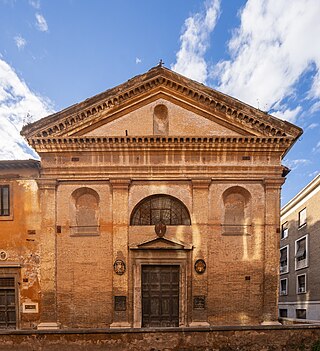
San Giovanni Decollato is a Roman Catholic church in Rome, sited on via di San Giovanni Decollato in the Ripa rione, a narrow road named after the church. Its construction took most of the 16th century.
Sight 24: Chiesa di Sant’Eligio dei Ferrari
The church of Sant'Eligio dei Ferrari is a Catholic place of worship in the historic center of Rome, located in the Ripa district, in Via di San Giovanni Decollato.
Sight 25: Arch of Janus
The Arch of Janus is the only quadrifrons triumphal arch preserved in Rome. It was set up in the early 4th century AD at a crossroads at the northeastern limit of the Forum Boarium, close to the Velabrum, over the Cloaca Maxima drain that went from the Forum to the River Tiber.
Sight 26: The Mouth of Truth
The Mouth of Truth is an ancient Roman marble mask in Rome, Italy, which stands against the left wall of the portico of the Santa Maria in Cosmedin church, at the Piazza della Bocca della Verità, the site of the ancient Forum Boarium. According to an enduring medieval legend, it will bite off the hand of any liar who places their hand in its mouth, or, alternatively, any who utters a lie while their hand is in the mouth. It still attracts many visitors who insert their hands.
Sight 27: Chiesa di Santa Maria in Cosmedin
The Basilica of Saint Mary in Cosmedin is a minor basilican church in Rome, Italy, dedicated to the Virgin Mary. It is located in the rione (neighborhood) of Ripa. Constructed first in the sixth century as a diaconia (deaconry) in an area of the city populated by Greek immigrants, it celebrated Eastern rites and currently serves the Melkite Greek Catholic community of Rome. The church was expanded in the eighth century and renovated in the twelfth century, when a campanile was added. A Baroque facade and interior refurbishment of 1718 were removed in 1894–1899; the exterior was restored to twelfth-century form, while the architecture of the interior recalls the eighth century with twelfth-century furnishings. The narthex of the church contains the famous Bocca della Verità sculpture.
Sight 28: Temple of Hercules Victor
The Temple of Hercules Victor or Hercules Olivarius is a Roman temple in Piazza Bocca della Verità, the former Forum Boarium, in Rome, Italy. It is a tholos, a round temple of Greek 'peripteral' design completely surrounded by a colonnade. This layout caused it to be mistaken for a temple of Vesta until it was correctly identified by Napoleon's Prefect of Rome, Camille de Tournon.
Sight 29: Cloaca Máxima
The Cloaca Maxima or, less often, Maxima Cloaca, was one of the world's earliest sewage systems. Its name is related to that of Cloacina, a Roman goddess. Built during either the Roman Kingdom or early Roman Republic, it was constructed in Ancient Rome in order to drain local marshes and remove waste from the city. It carried effluent to the River Tiber, which ran beside the city. The sewer started at the Forum Augustum and ended at the Ponte Rotto and Ponte Palatino. It began as an open air canal, but it developed into a much larger sewer over the course of time. Agrippa renovated and reconstructed much of the sewer. This would not be the only development in the sewers. By the first century CE all eleven Roman aqueducts were connected to the sewer. After the Roman Empire fell the sewer still was used. By the 19th century, it became a tourist attraction. Some parts of the sewer are still used today. Whilst still being used, it was highly valued as a sacred symbol of Roman culture, and Roman engineering.
Sight 30: Sant'Andrea dei Vascellari
The former oratory of Sant'Andrea dei Vascellari, now the Sant'Andrea de Scaphis art gallery, is a deconsecrated Catholic place of worship in Rome, located in the Trastevere district in Via dei Vascellari.
Sight 31: Chiesa di San Benedetto in Piscinula
The Church of San Benedetto in Piscinula is a very small and very old church in Rome, in the district of Trastevere.
Sight 32: Basilica of St. Bartholomew on the Island
The Basilica of St. Bartholomew on the Island is a titular minor basilica, located in Rome, Italy. It was founded in 998 by Otto III, Holy Roman Emperor and contains the putative relics of St. Bartholomew the Apostle. It is located on Tiber Island, on the site of the former temple of Aesculapius, which had cleansed the island of its former ill-repute among the Romans and established its reputation as a hospital, continued under Christian auspices today.
Sight 33: Santa Maria della Luce
The church of Santa Maria della Luce is an ancient church in the Rione of Trastevere in Rome, Italy.
Sight 34: San Giovanni Battista dei Genovesi
San Giovanni Battista dei Genovesi is a Roman Catholic church on via Anicia in the Trastevere district of Rome. It is the regional church for Genoa.
Sight 35: San Crisogono
San Crisogono is a church in Rome dedicated to the martyr Saint Chrysogonus. It was one of the tituli, the first parish churches of Rome, and was probably built in the 4th century under Pope Sylvester I (314–335).
Sight 36: Chiesa dei Santi Maria e Gallicano
Santi Maria e Gallicano is a Roman Catholic church in Rome, in the district of Trastevere, along via di S. Gallicano, 2.
Sight 37: Chiesa di San Francesco a Ripa
San Francesco a Ripa is a church in Rome, Italy. It is dedicated to Francis of Assisi who once stayed at the adjacent convent. The term Ripa refers to the nearby riverbank of the Tiber.
Sight 38: Chiesa di San Cosimato
The church of San Cosimato is a church located in the city of Rome, Italy. It was originally built in the 10th century in the Trastevere rione and now includes the hospital known as "Nuovo Regina Margherita." Originally, it was built as a Benedictine monastery dedicated to Saints Cosmas and Damian, from whom it derives its name, and it carried the added designation of in mica aurea due to the presence of fluvial sand of yellowish color.
Sight 39: Chiesa di San Callisto
San Callisto is a Roman Catholic titular church in Rome, Italy, built over the site of Pope Callixtus I's martyrdom.
Sight 40: Fontana di Piazza Santa Maria in Trastevere
The Fountain in Piazza Santa Maria in Trastevere is a fountain located in the square in front of the church of Santa Maria in Trastevere, Rome, Italy. It is believed to be the oldest fountain in Rome, dating back, according to some sources, to the 8th century. The present fountain is the work of Donato Bramante, with later additions by Gian Lorenzo Bernini and Carlo Fontana.
Wikipedia: Fountain in Piazza Santa Maria in Trastevere (EN)
Sight 41: Santa Margherita in Trastevere
The church of Santa Margherita in Trastevere is a Roman Catholic place of worship in Rome, Italy, located in Piazza di Sant'Apollonia, 13.
Sight 42: Sant’Egidio a Trastevere
Sant'Egidio is a convent church in Trastevere, Rome. Sant'Egidio is the patron saint of hermits.
Sight 43: Santa Maria della Scala
Santa Maria della Scala is a titular church in Rome, Italy, located in the Trastevere rione. It is served by friars of the Discalced Carmelite Order. Cardinal Ernest Simoni took possession of the titular church on 11 February 2017.
Sight 44: San Giovanni della Malva in Trastevere
San Giovanni della Malva in Trastevere is a church in Rome, in the Trastevere district, located in Piazza di S. Giovanni della Malva. It is the Albanian national church in Rome.
Sight 45: Santa Dorotea
Santa Dorotea is an ancient Catholic church in the Diocese of Rome served by the Conventual Franciscan friars. It was first attested to in a papal bull of Pope Callistus II in 1123, being referred to under its first dedication of San Silvestro alla Porta Settimiana.
Sight 46: Santa Maria dei Sette Dolori
Santa Maria dei Sette Dolori is a Baroque church in Rome built attached to a convent in the rione of Trastevere, located on Via Garibaldi, near the intersection with Via dei Panieri.
Sight 47: Sant’Antonio Maria Zaccaria
The church of Sant'Antonio Maria Zaccaria is a church in Rome, in the Trastevere district, located in via Ulisse Seni, 1.
Wikipedia: Chiesa di Sant'Antonio Maria Zaccaria (Roma) (IT)
Sight 48: Villa Sciarra
Villa Sciarra is a park in Rome named for the villa at its centre. It is located between the neighborhoods of Trastevere, Gianicolo and Monteverde Vecchio.
Sight 49: Chiesa di Santa Maria Regina Pacis
Santa Maria Regina Pacis a Monte Verde is a 20th-century parochial church and titular church in Monteverde, central Rome.
Share
How likely are you to recommend us?
Disclaimer Please be aware of your surroundings and do not enter private property. We are not liable for any damages that occur during the tours.
GPX-Download For navigation apps and GPS devices you can download the tour as a GPX file.

.jpg)
